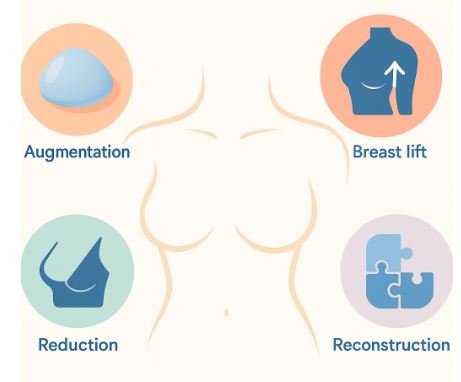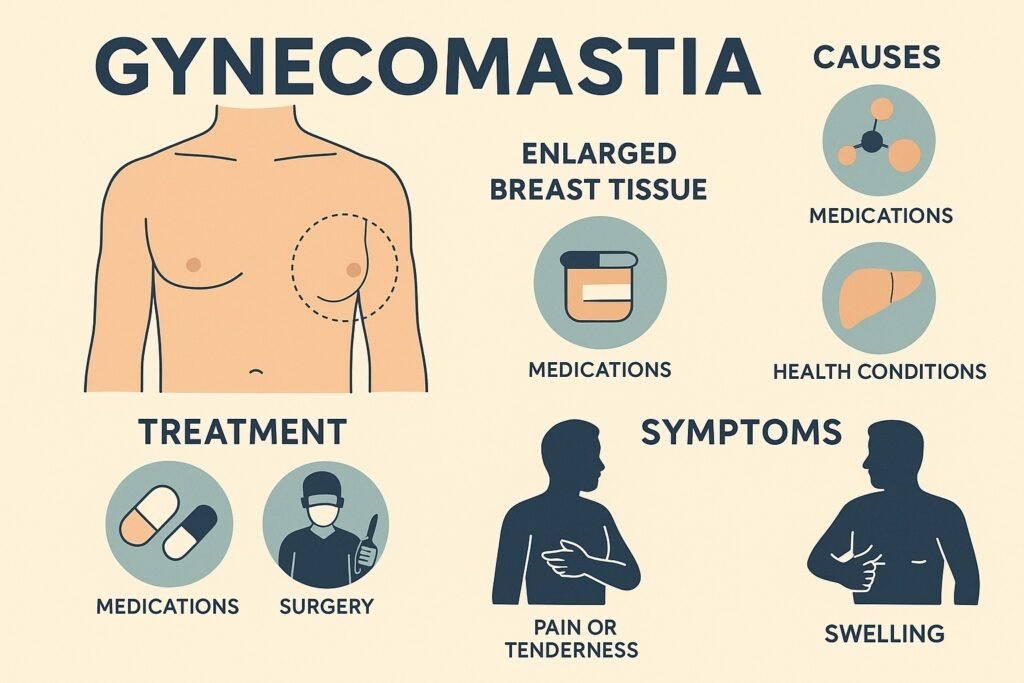Introduction: why understanding breast surgery types matters
Searching “breast surgery types” now yields millions of results, but many posts skim over price realism and real-world safety. As a board-certified surgeon turned medical blogger, I break down each procedure, list transparent costs in United States Dollars, and flag proven precautions. Read on to choose wisely and avoid common pitfalls.
1. Quick glossary of breast surgery options
| Procedure | Core Goal | Ideal Patient Profile | Average OR Time |
| Augmentation | Add volume with implants or fat graft | Small-to-moderate breasts, stable weight | 60–90 minutes |
| Lift (Mastopexy) | Correct sag, reposition nipple | Post-pregnancy or weight-loss droop | 90–150 minutes |
| Augmentation-Lift Combo | Add volume and lift tissue | Deflated and ptotic breasts | 120–180 minutes |
| Reduction | Decrease size, ease back pain | Macromastia causing pain | 150–210 minutes |
| Reconstruction | Restore form post-mastectomy | Cancer survivors | Multi-stage |
| Revision | Fix capsular contracture, asymmetry | Prior surgery issues | Varies |
2. Augmentation: silicone, saline, and fat-transfer explained

2.1 Silicone and saline implants
Silicone implants feel more natural; saline offers smaller scars because the shell is inserted empty. Modern cohesive-gel (“gummy bear”) devices resist leakage.
- Price range: USD 5 500–8 800 per case in the United States, USD 4 200–6 600 in South Korea.
- Longevity: Ten-year rupture risk has dropped below 1 %.
- Precautions: Demand an FDA-approved or CE-marked brand; verify serial numbers before implantation.
2.2 Fat-transfer (autologous augmentation)
Harvested fat is micro-filtered and layered under the gland. No foreign bodies, but volume gain tops out around one cup size.
- Price range: USD 7 700–11 000 (liposuction included).
- Take-rate: Roughly 60 % fat survival at one year.
- Precautions: Choose a surgeon skilled in low-pressure injections to avoid oil-cysts.
3. Lift and augmentation-lift combos
A pure mastopexy reshapes tissue but does not enlarge upper-pole fullness. Combining a lift with moderate implants solves both droop and volume loss.
- Price range: Lift only USD 6 300–9 000; combo USD 9 800–13 500.
- Scar placement: Lollipop or anchor patterns; discuss your tolerance for visible lines.
- Precautions: Smoking doubles dehiscence risk—quit six weeks beforehand.
4. Breast reduction: health over aesthetics
This procedure removes gland, fat, and skin to relieve neck strain and chronic rashes.
- Price range: USD 8 500–12 200 (insurance often reimburses if ≥500 g per side).
- Nipple sensation: Up to 15 % transient numbness; permanent loss is rare (<3 %).
- Precautions: Ask for a pathology report on excised tissue to rule out occult disease.
5. Reconstruction: implant, expander, and flap choices
Post-mastectomy patients may select a two-stage expander-implant path or autologous flaps (DIEP, PAP) that rebuild the mound with living tissue.
- Price range:
- Expander + implant: USD 12 000–18 000 total.
- DIEP flap: USD 22 000–30 000 due to microsurgery.
- Insurance: U.S. law (Women’s Health and Cancer Rights Act) mandates coverage.
- Precautions: Confirm your surgeon’s microsurgical volume; higher numbers correlate with lower flap-loss rates.
6. Revision surgery: fixing earlier mistakes
Capsular contracture, “double-bubble,” and implant rotation account for most revisions. Surgeons remove scar tissue, swap devices, or reposition pockets.
- Price range: USD 6 000–12 000 depending on complexity.
- Precautions: Ask if ADM (acellular dermal matrix) is needed; it raises material cost by USD 2 500 but slashes recurrence.
7. Cross-border price comparison
| Country | Augmentation (USD) | Lift (USD) | Reduction (USD) |
| South Korea | 4 200–6 600 | 5 800–8 400 | 7 200–10 300 |
| United States | 5 500–8 800 | 6 300–9 000 | 8 500–12 200 |
| Brazil | 3 900–5 600 | 5 100–7 500 | 7 000–9 800 |
| Turkey | 3 800–5 200 | 5 000–7 200 | 6 800–9 100 |
Exchange rates dated July 30 2025; always verify current quotes.
8. Seven universal safety checkpoints
- Board certification – Confirm membership in a reputable plastic-surgery board.
- Hospital privileges – Surgeons credentialed at a hospital undergo extra vetting.
- Device tracking – Keep your implant ID card; register it with the manufacturer.
- Informed consent – Read every page, especially restrictions on exercise and driving.
- Bloodwork and imaging – Baseline labs and, for women over 40, a mammogram.
- Post-op plan – Arrange a caretaker for 48 hours; stock prescribed medications.
- Revision policy – Know if surgical fees or facility costs are waived for corrections.
Conclusion: choosing the right breast surgery types for you
Breast surgery (“가슴성형”) offers more than one path to body confidence. Augmentation suits volume seekers: lifts repair droop; reductions relieve pain; reconstructions restore wholeness; revisions solve the rare setbacks. By pairing transparent pricing with rigorous safety checks, you can step into the OR informed, empowered, and ready for a smooth recovery in 2025.


